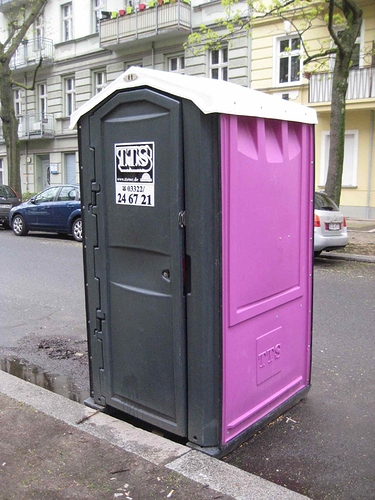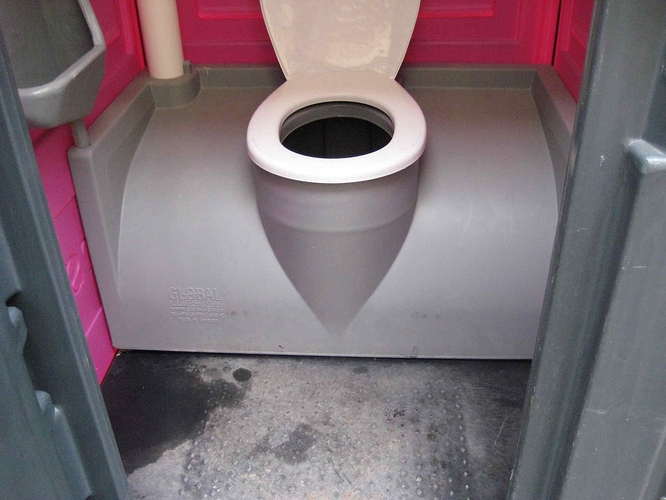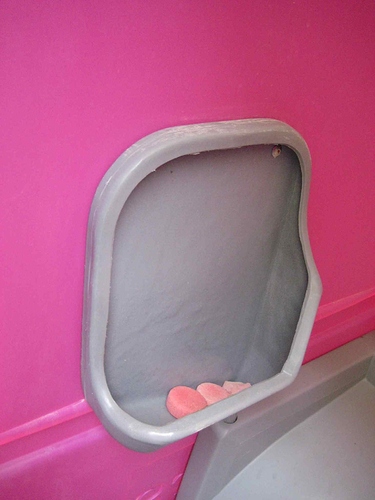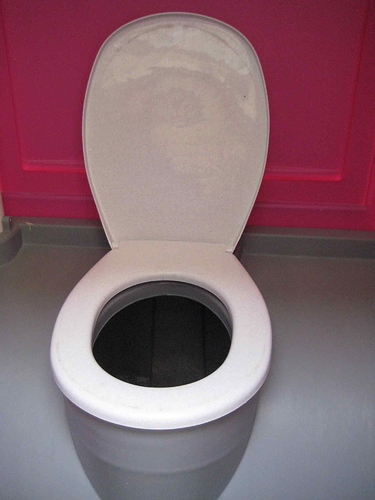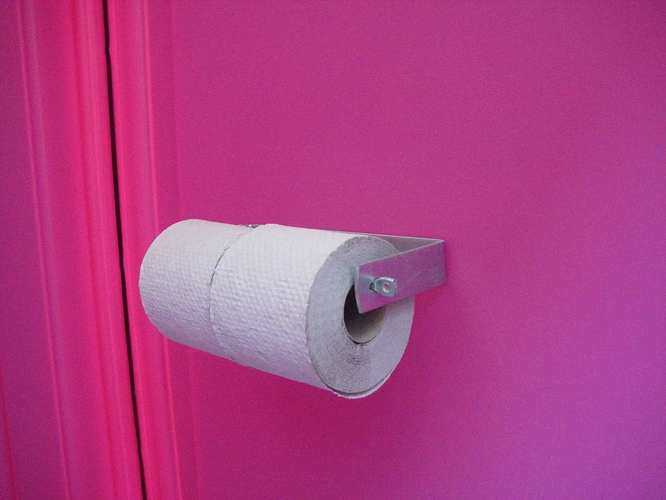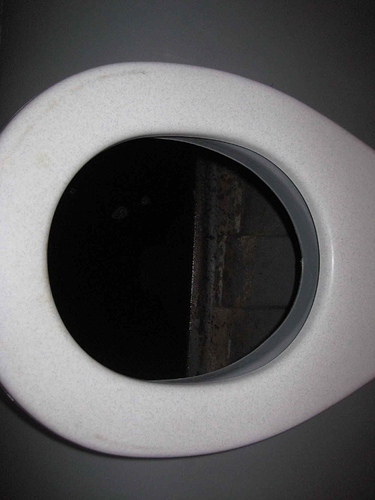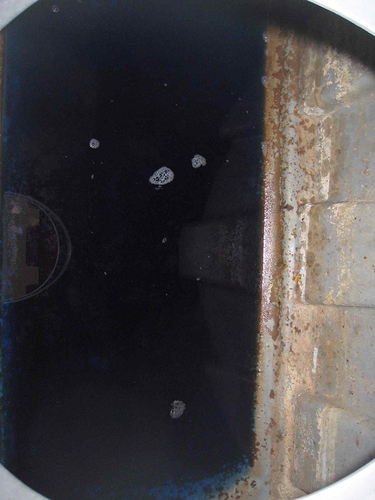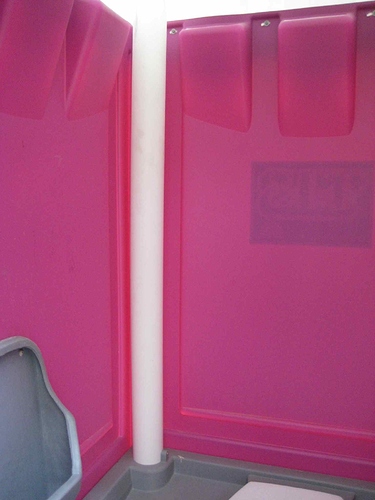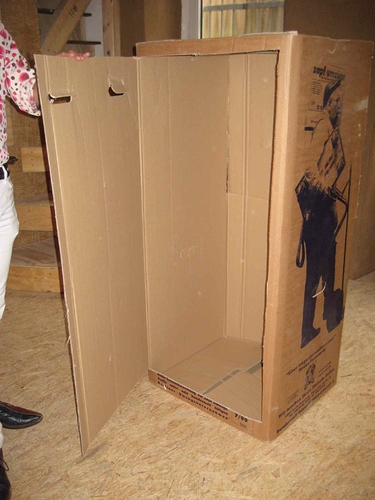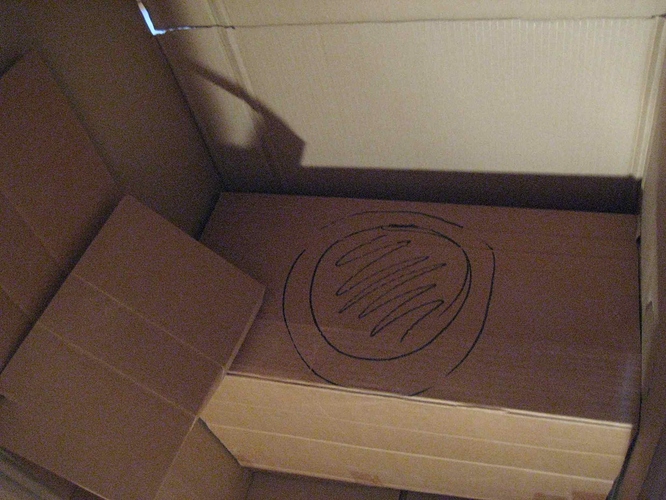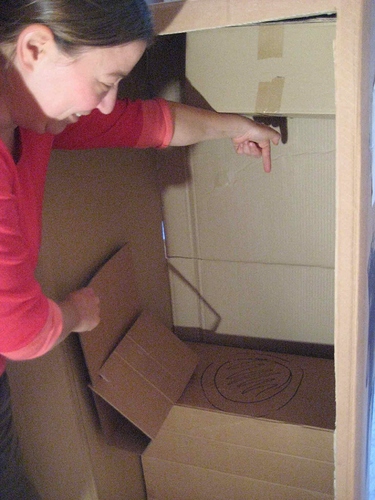For the Emergent Berlin Fest we want to do a hackathon of the typical mobile toilet (in Germany the most common brand name is ‘Dixie’) wich is currently mixing valuable nutrients with disinfectant chemicals and turn them into waste that cannot be composted.
These are the parts we want to ‘hack’:
1. Privacy/ protection from weather
walls, roof & door
door hinges with spring to keep the door from opening
door lock & handle
floor & space inside
The floor needs to be a non-slip surface, the cabin has to be at least 1 m2 to enable people to turn around without touching the walls.
All materials need to be hygienic, sturdy, water- and windproof, UV-resistant and look better than this to give a comfortable feel.
2. user interface
urinal
The anti-odour tablets can be replaced by a spray bottle with EM-solution (effective micro-organisms). The EM prevent pathogens from growing and digest the urea before it turn into ammonia that is responsible for the urine odour.
toilet seat
Urinal and seat need to be easily cleanable and resistant to moisture and urea
toilet paper & holder
needs to be sturdy and easy to handle for frequent maintenance (changing of rolls)
There also needs to be a dispenser for the wood chip/ terra preta substrate/ soil needed to cover the faeces. There should be a dispenser for disinfectant/ a hand wash basin with bio-degradeable soap. The more luxurious ‘Dixie’ toilets with a water inlet (connection for a hose) have one.
3. collection unit(s)
tank under the seat
there should be a separation device inserted under the seat to enable separate collection of faeces and urine. This makes them easier and safer to handle.
the tank will need to be devided to store urine (a lot) and faeces (very little) separately
pipe for ventilation to prevent odour
Results are best if the pipe is outside and painted black as this creates a natural draft when the air inside the pipe warms up and rises. If the urine is stored in airtight containers and the faees are kept dry by adding wood chip hardly any odour develops as the aerobic bacteria responsible come from the feaces and interact with the urea.
Tanks should be removable (the cabin needs an opening at the back) without having to re-open the containers/ touch the excrements. Alternatively the urine can be removed without air contact through an outlet and the faeces collector through the top if the seat and separation unit are removeable.
Connecting ideas for alterations on the Dixie toilet:
- standardize the urine outlet to enable easy connection e.g. with a pee-ponics system for urban farming
- install a water filter system to use rain water for hand washing
- use old cooking oil for making soap
- build a micro-methanizer to make use of the energy stored in the excrements
- build a worm composting system to fast-compost the faeces
- connect to a local CSA to find a user for the nutrients
- develop a passive water extraction system to reduce urine volume for transport
- develop standardized and fully recyclable pieces for the construction of cabin, seats and tanks, e.g. by using the 3erlin Grid or Open Structures model
